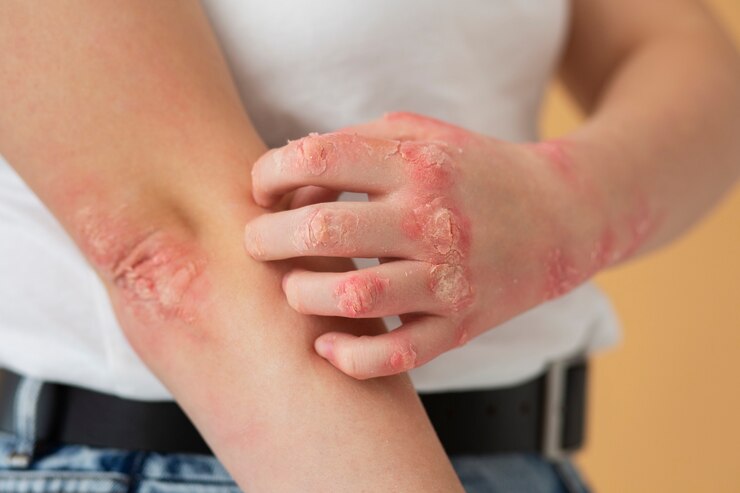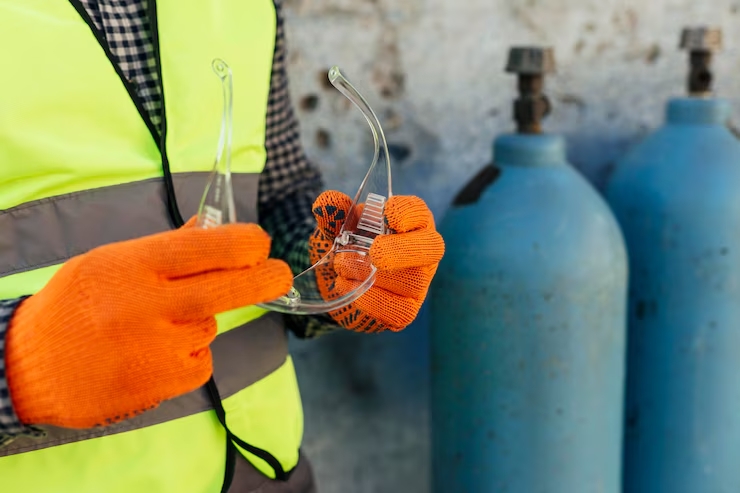Chemical burns occur when your skin or eyes interact with an irritant such as an acid or base. Chemical burns are also called chemical combustion. They can cause a reaction on your skin or your body. These burns can affect your internal organs when they consume chemicals.
If you swallow a chemical, you should immediately check your mouth for a reduction or a burn. You should also call a local Poison Control Center or go to the emergency room immediately if you are swallowed by the chemical.
Acids and bases cause most burns. Chemical combustion can happen in school, at work, or wherever you handle chemicals. Some of the common products that cause burns are:
Acid car battery
whitening
ammonia
own prosthesis
Dental whitening devices
Pool chlorination
The most exposed to burns including chemical burns, are infants, adults and people with disabilities. These groups may not control the chemicals properly. You are more likely to burn yourself if you handle acids or other chemicals without help and your ability to resist is limited.
Burning symptoms may vary depending on the type of burn. Burning a chemical that swallows you causes symptoms other than skin burns. Symptoms of pot burns depend on:
The amount of time your skin is in contact with the chemical
if the chemical is inhaled or swallowed
If your skin has open cuts or sores or is full during contact
the place of contact
the quantity and strength of the chemical used
if the chemical is a gas, liquid or solid
For example, ingestion of an alkaline chemical may cause chemical burn. This can cause symptoms other than skin burns.
Common symptoms of burns usually include:
black or dead skin, which occurs mainly during Chemical burn
Destruction, redness or burning in the affected area
Deaf or sick in the affected area
Loss of vision or dark vision if chemicals come in contact with your eyes
Some of the following symptoms may also occur if you swallowed a chemical:
irregular heartbeat
headache
Low blood pressure
Cardiac arrest or heart attack
breathlessness
cough
seizures
dizziness
turn the muscles
Your health care provider will make a diagnosis for several reasons. These can be:
the extent of the disease in the affected area
the amount of damage to the area
the depth of the burn
Signs of possible infections
the extent of existing inflammation.
Compare your doctor to burns depending on the extent of the injury and the depth of the burn itself: An injury to the upper layer of the skin or epidermis often caused by heat or even a chemical burn, is called a superficial burn. It was formerly called the first degree of combustion.
A lesion of the second layer of skin or dermis is called a slight thickness or damage to the skin. It was formerly known as second-degree combustion. Lesions in the third layer of the skin or subcutaneous tissue are called whole tissue lesions. It was once called a third degree burn.
First aid should be provided immediately after experiencing a chemical burn or other types of burns. This includes removing chemicals that cause burns and removing underwater skin that lasts 10 to 20 minutes. If a chemical interacts with your eyes, flush your eyes constantly for at least 20 minutes before consulting an ambulance.
Remove all clothing or jewelery contaminated with chemicals. Cover the burned area with a bandage or dry, sterile cloth, if possible. If the burn is superficial, you may have overkhaton analgesics (OTC) such as ibuprofen or acetaminophen. In severe cases, consulting a personal injury lawyer with high settlement rates can help you secure compensation for medical costs and damages. You should go to the emergency department immediately if the burn is more severe.
You should also go to the hospital immediately if:
The burn is larger than 3 inches in width or length
The burn is in the face, hands, feet, groin or buttocks
Burning occurs in a larger joint, for example on your knees
The disease can not control over-the-counter pain relievers
You have signs and symptoms of shock with shallow breathing, dizziness and low blood pressure
Depending on the severity of your condition, your health care provider.
The landscape depends on the severity of the burn. The smaller combustion of chemical healing with proper treatment is usually quite fast. However, severe burns may require long-term treatment. In this case, your doctor may recommend that you seek treatment in a specialized center for burns.
Some people with serious burns can have complications, including:
Distortion
Loss of members
infection
scar
Damage to muscles and tissues
depression
flashbacks
nightmare
Most severely burned people are recovered if properly rehabilitated and rehabilitated.
You can avoid burns by observing safety precautions and safety when handling chemicals. These included:
Keep chemicals out of the reach of children
Store chemicals properly and safely after use
Use of chemicals in well-ventilated areas
Leave the chemicals in their original containers with warning signs
Avoid using chemicals
Avoid mixing chemicals with other chemicals
Only buy chemicals in protective containers
Keep chemicals away from food and drink
Wear protective clothing when handling chemicals.

The symptoms of chemical hazard depend on the chemical involved. Symptoms include irritation, discoloration or burning of the skin, burning sensation, respiratory distress, blood cough and / or tissue necrosis. A chemical burn may result from direct contact with certain substances, causing significant damage to the skin and underlying tissues.
In such cases, seeking immediate legal advice from a personal injury lawyer can be crucial to understanding your rights and pursuing compensation if the exposure occurred due to negligence. Common sources of corrosion are sulfuric acid (H2SO4), hydrochloric acid (HCl), sodium hydroxide (NaOH), lime (CaO), silver nitrate (AgNO3) and carbon dioxide. hydrogen (H2O2).
The effect depends on the ingredients. Hydrogen peroxide removes a layer of bleached skin, while nitric acid causes a skin color change to yellow and silver nitrate that produces visible black spots. Chemical combustion may occur through direct contact with the body surface, including the skin and eyes, by inhalation and / or ingestion.
Lipophilic substances that spread well in human tissues, for example. Like hydrofluoric acid, sulfur mustard and dimethyl sulfate, it may not react immediately, but may cause burns and ignition times after contact. The fields of chemistry, mining, drugs and related fields are examples of jobs that are conducive to combustion. Hydrofluoric acid enters the bloodstream and is calcium and magnesium. The resulting salt can cause cardiac arrest after being excreted by the skin.
CONCLUSIONS
The mortality and mortality of patients with CBT are higher than those of patients with loneliness or trauma. We show an extraordinary case of burns associated with VCI burn and rupture. The first treatment of such a patient involves stabilization and resuscitation, such as the treatment of burn-free trauma. It is important to control intensive care and the treatment of wounds is the second priority.
A large amount of sterile saline should start as soon as possible, even before the patient is hospitalized. In cases involving a chemical burn or other burn types, a team strategy that includes nutritional and psychiatric care is necessary to enable a complete recovery of patients with CBT. Chemical management and thermal burns are the same.
REFERENCES
*G.F. Purdue, J.L. Hunt Multiple trauma and the burn patient Am J Surg, 158 , pp. 536-
539.
*J.M. Santaniello, F.A. Luchette, T.J. Esposito, et al.Ten-year experience of burn, trauma, and
combined burn/trauma injuries comparing outcomes.
*L.A. Kudsk, F. Bongard, R.C. Lim Jr.Determinants of survival after vena cava injury. Analysis
of a 14-year experienceArch Surg.
*C.J. Hansen, C. Bernadas, M.A. West, et al.Abdominal vena caval injuries: outcomes remain
dismalSurgery.
*P.H. Navsaria, P. de Bruyn, A.J. Nico Penetrating abdominal vena cava injuries Eur J Vasc
Endovasc Surg.
*G.S. Rozycki, M.G. Ochsner, J.A. Schmidt, et al.A prospective study of surgeon-performed
ultrasound as the primary adjuvant modality for injured patient assessment.
*P.L. Henneman, J.A. Marx, E.E. Moore, S.V. Cantrill, L.A. AmmonsDiagnostic peritoneal
lavage: accuracy in predicting necessary laparotomy following blunt and penetrating trauma.




